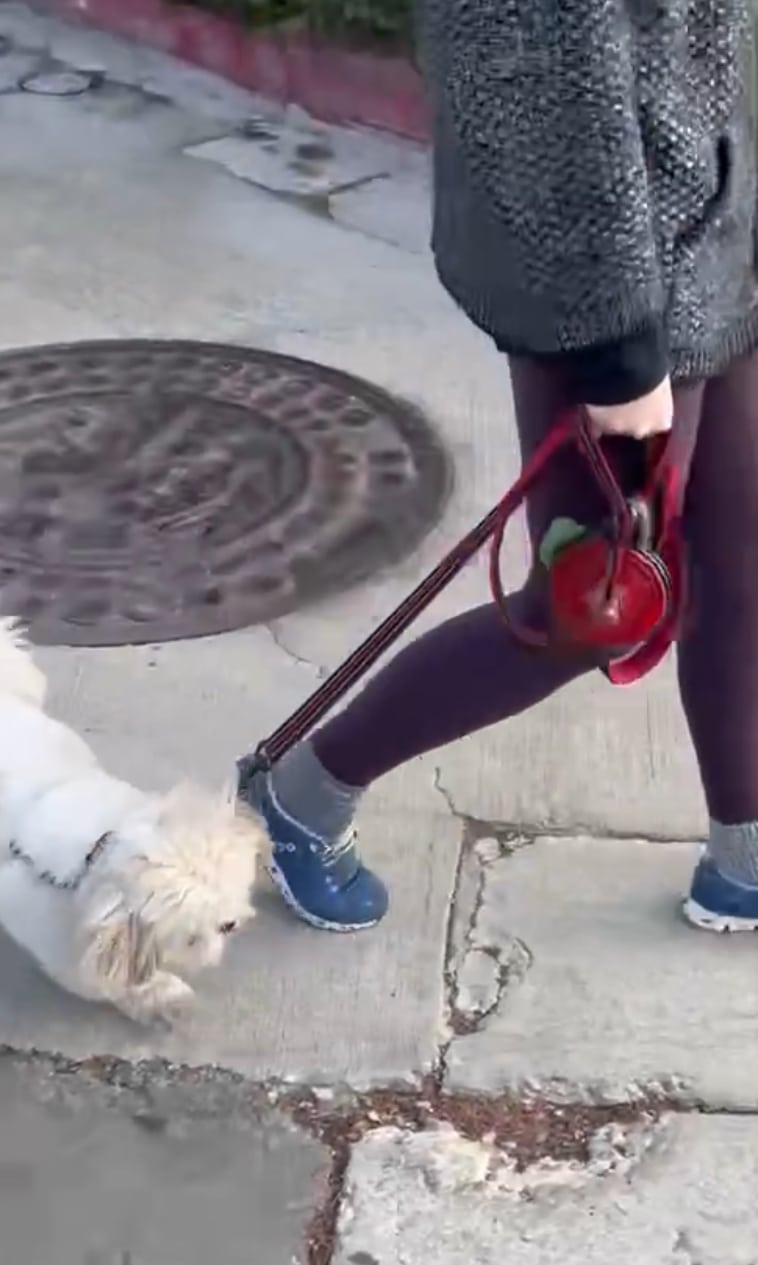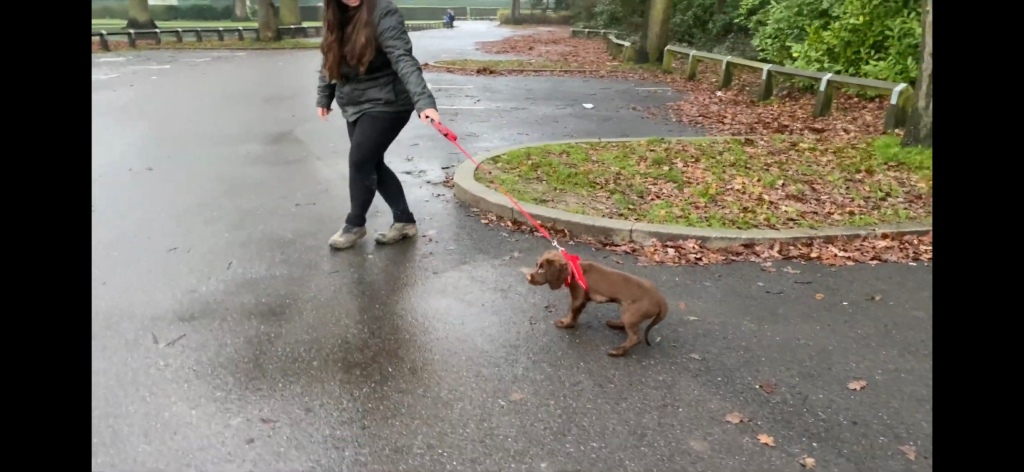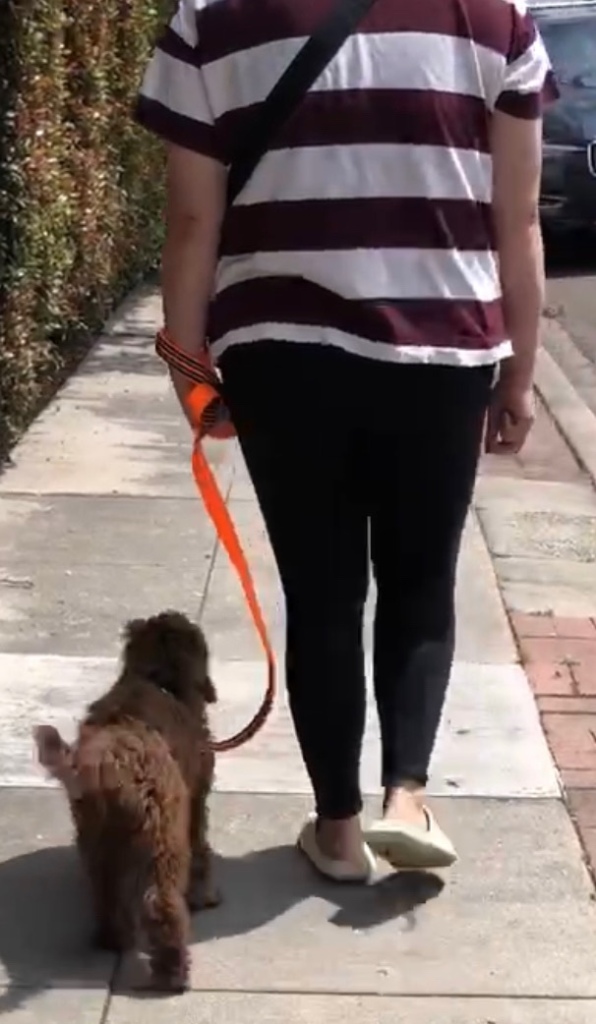If you think of the leash as a conversation between you & your dog, it’s easy to understand why pulling or tugging on the leash isn’t resulting in your dog walking with you.

Dogs are primarily physical communicators. Humans are primarily verbal. Most people think of the leash as reinforcement for what they’re saying. Dogs learn from our behavior. For dogs, the leash is there to reinforce what we do.
When we pull on the leash to tell the dog to stop pulling, or we pull on the leash to move our dog without their cooperation, we make it all but impossible for the dog to understand pulling you is a problem.
When we pull on the leash, the dog’s attention is drawn to the pressure on the leash (what you don’t want), rather than “marking” their behavior when they’re next to us, on a loose leash (desired behavior). When we focus on the behavior we want (a dog walking naturally beside us), it’s easier and more enjoyable for both species.
An easy way to begin communicating via the leash involves teaching yourself to not use the leash to move your dog. It’s an automatic reaction for many people to pull dogs where we want them to go. Becoming aware of this happening is the first step.
When you catch yourself pulling your dog with the leash, stop. Reset yourself (next paragraph) and the leash to position #1. Take a breath and resume your practice.

When you discover your dog walking ahead of you, stop. Keep your leash arm sealed to your torso. Move forward until your leg on your leash side is next to your dog’s ear. As you reduce the space between you, reduce the amount of leash that’s lose between you by sliding your leash hand closer to the handle, or pulling the excess leash through your leash hand with your free hand.
If we don’t shorten the leash as part of the reset, dogs will continue to walk in front of us.
Once you’re in walk position #1, with your arm, your position, and your grip in alignment, stop. Move forward only when there’s some slack on the leash between you.
Your goal is to reward the absence of pressure with movement.
When we stop the instant there’s slight pressure on the leash hand from our dog pulling, and don’t move for however long it takes (often less than 15 seconds), dogs will back up. They want to relieve the pressure, and when we’re crystal clear we won’t move while the leash is taut, dogs will correct their position, if allowed the opportunity.

Dogs can only begin to pay attention to this subtle conversation when we’re still, quiet, and our leash arm doesn’t give in to pulling. Establishing this conversation is easier indoors, or in a private outdoor space.
If our leash arm moves when dogs are pulling, we’re muddying the leash conversation and guaranteeing ourselves more pulling.
By keeping your arm still, always touching your side, when you feel even slight tension you can easily push your arm into your torso and freeze. If your dog gets your arm away from your body, they have an incentive to pull harder because to them pulling “worked.”
It’s possible to loose leash train even practiced pullers in a week or 2, when we’re consistent with this exercise.
Dogs learn where we want them to be (next to us), and they learn they’re in control of the pressure. They can end the pressure immediately by moving to our side.
Having agency over the leash pressure also creates a positive association with being next to you, further reinforcing the desired behavior and your bond.
I’ve trained hundreds of dogs how to walk on the leash over the years. One thing I know for sure is that the vast majority of dogs are capable of walking with zero tension on the leash, provided they’re given the appropriate instruction and consistent practice.
Reasonable patience from their person is equally important. Dogs don’t always respond immediately, and humans often mistake that for defiance, rather than their dog’s learning process.

In my experience, it’s almost always the latter.
Dee Green has been a professional dog trainer and canine behavior consultant for more than 20 years. She specializes in puppies up to 18 months, and fearful, anxious and reactive dogs of all ages.
